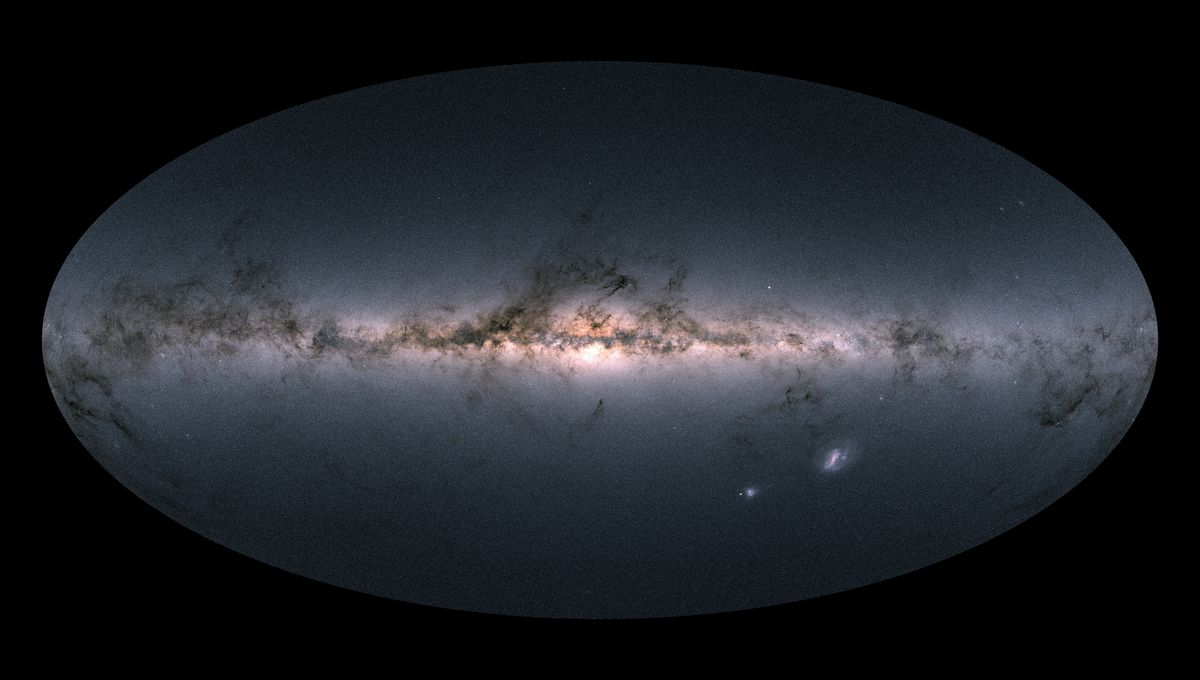
The European Space Agency’s Gaia observatory has produced the most accurate map of the Milky Way, with the position and motion of almost 2 billion stars being used to better understand our galaxy’s present and past. However, teams are now looking at the future. One of them aims to conduct a follow-up mission that can re-observe what Gaia has seen and see where Gaia couldn’t, going into the infrared.
The incredible work of Gaia is ongoing – thanks to Gaia, for example, we know that the Milky Way absorbed several smaller galaxies many billion years ago – but with time the map will become more imprecise. In a few decades’ time, it will no longer be good enough for the kind of work that the spacecraft has gotten astronomers used to.
GaiaNIR (NIR stands for near-infrared) allows the observatory to see through the dust that features in the plane of the Milky Way. It will allow a better understanding of the dynamical processes at the core, in regions with a lot of star formation, and expand the measured number of stars by a factor of six if not ten.
“Even though Gaia is very brilliant and is revolutionizing everything, it’s really only measuring 1 percent of the galaxy,” GaiaNIR proposer Professor David Hobbs, from the University of Lund, told IFLScience. “The important thing about infrared, of course, is that all of the really dynamically interesting parts of the galaxy, they’re all lying in the galactic plane, and this is where all the dust is as well. Gaia is very good at seeing out of the galaxy, but it’s actually not that very good at seeing into the galaxy. It needs, in a sense, a pair of glasses to see through the dust, and that’s what the near-infrared detectors will allow.”
Not to be all Annie Get Your Gun about it, but the proposal sees GaiaNIR being able to do anything Gaia can do but better. We won’t be throwing away the incredible work done by Gaia – actually, building on it with a new mission is expected to push the precision up by a factor of 15. Such precision has long been sought in astrometry but it has remained elusive due to many challenges.
The team also hopes to include new instruments such as a spectrograph to gain even more insights into the stars and other objects that GaiaNIR will measure. Gaia has let scientists discover black holes, asteroids, and moons of asteroids, on top of measuring the position of stars and distant galaxies. It’s crucial to keep measuring many of these systems, as their motion changes in ways we can’t predict.
“If you don’t keep measuring them, they won’t be where you think they are in 20 years time,” Professor Hobbs continued. “The problem with this kind of mission is it’s very hard to summarize how many interesting things there are because there are so many of them. I mean, I can list off case after case after case, but there are just so many different cases.”
With boundless potential for discovery, the mission proposals for GaiaNIR hope for such a mission to be picked up. If it is selected, it will be sent into space in the 2040s, building on the still-growing legacy of its predecessor.
Professor Hobbs presented details of the proposal at the XXXII International Astronomical Union General Assembly in Cape Town.
Source Link: The Best Map Of The Milky Way Is Going To Get Better – By Tracking Almost 20 Billion Stars